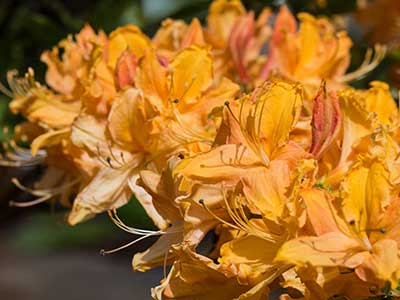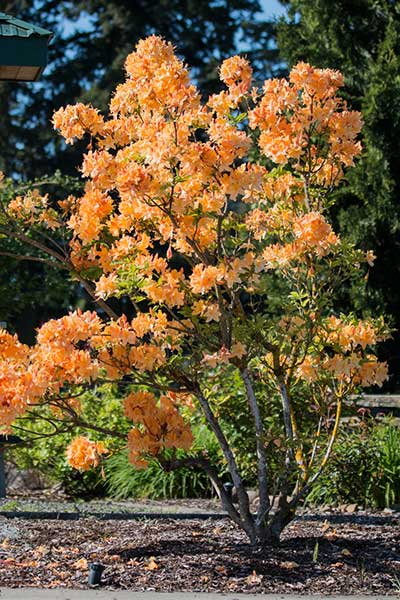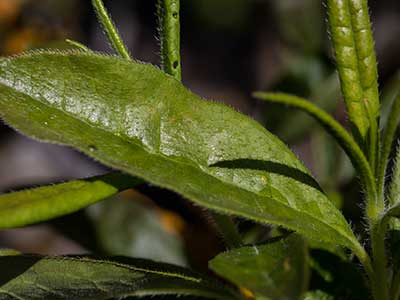Deciduous Azalea
- Scientific Name: Azalea
- Garden: Rain Garden
- Plant Type: Shrub
- Evergreen/Deciduous: Deciduous
- Sun/Shade Exposure: Full Sun to Part Shade
- Moisture Requirements: Moist/Well-Drained
Plant Information
Some orange flowering deciduous azaleas are 'Arneson Gem', 'Gilbraltar', 'Klondyke', 'Mandarin Lights'
Size: Most grow to around 4-5 feet tall x 5-6’ wide, but can get larger given time.
Culture: Unlike their evergreen relatives, deciduous Azaleas and Rhododendrons thrive in full sun. Part-shade to shade is fine too. Plants grown in more shade will have an open airy shape and fewer flowers than plants grown with more light.
Any Rhododendron or Azalea prefers well-drained soil with an acidic pH. The Pacific Northwest naturally has soil with low pH because of copious rain, but much of the area has heavy clay soil, so mixing compost to the bed before planting is advised. Rhodies and Azaleas have shallow root systems and prefer a thin layer of mulch, under 1".
Fertilizer used should be specific to acid-loving plants, and directions should be followed carefully.
Problems: Enemy number one used to be powdery mildew, but now Portland has a pest called Azalea Lace Bug, which sucks chlorophyll from the inside of the foliage, leaving white or coppery stippling.
Treating Powdery Mildew: Most Deciduous Azaleas and Rhododendrons are subject to powdery mildew on leaves during the warmth of summer. It's a good idea to clean up effected leaves after they've fallen off in autumn, and add a light layer of mulch to cover spores that may be laying about on the ground. Options for treatment are many and include:
- Passive acceptance. Powdery Mildew will not (usually) kill the plant.
- Water leaves in the morning. The idea is that the spores that make Powdery Mildew can be washed off. If the leaves are wet during the night mildew spreads, so allow plenty of time for leaves to dry before nightfall. This is not a fool-proof method, especially considering that rain cannot be controlled, but for those who prefer not to spray, it may be worth a try.
- Chemical warfare. Many fungicides, both organic and synthetic, are available and effective. If you choose to use chemicals, no matter if they are organic or synthetic, be careful to follow the directions carefully and follow all recommended precautions.
Treating Azalea Lace Bug: The good news is that deciduous azaleas and rhododendrons are not the Lace Bug's first priority. Azalea Lace Bugs lay their eggs inside the leaves of evergreen azaleas in fall, where they stay protected through the winter and hatch in late spring. Since deciduous azaleas and rhododendrons lose their leaves, they can't support eggs over winter. Most damage deciduous azaleas receive comes from adult Lace Bugs who have eaten up all the evergreen azaleas in the neighborhood and are moving on to other delicacies.
Data Source
https://www.portlandnursery.comPlant Photos







